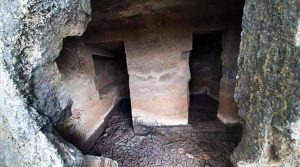
The Sigalovada Sutta (DN 31) is often called the layperson’s code of discipline or code of ethics. It is one of the few texts—and perhaps the most broad and comprehensive—in the Pali canon in which the Buddha teaches a layperson how to live a good life. Because of this, the text has been handed down through the centuries in the Theravada tradition as a work to be studied, contemplated, and practiced by laypeople.
Buddhist scholar Sarah Shaw writes of it: “A favourite text throughout Buddhist countries, specifically addressed to the laity, the Sigalovada-Sutta enjoins activities such as care for one’s teachers, servants, spouses, and relatives, and suggests the best ways of fulfilling them.” (12) For laypeople, this along with some devotional works and blessings were generally thought to suffice. In early Buddhism and much of Theravada history, the bulk of the teachings were given by and to monastics, who could devote the needed time and energy toward understanding and practicing them.
However, modernity has in a way brought balance to this once-stark divide. Laypeople have more free time today—if it is not eaten up by addictions to social media or other current ailments—and a movement across Buddhist societies in the last 100 or so years has been to empower laypeople within sanghas and to offer greater access to the full breadth of the teachings and practices.
As such, for many Western Buddhists the Sigalovada Sutta can seem like an antiquated curiosity, a teaching for a bygone age and not something to be examined seriously today. But what does a close reading of—or sitting with—the Sigalovada offer? A lot, I would argue.
To begin, we should ask about the spirit in which we are sitting with Sigala, the Buddha’s interlocutor in the sutta. Here a note from Buddhist scholar Elizabeth J. Harris in her study of violence in the Buddha’s teachings:
The analysis of historical context calls into question whether any philosophy or thought system can have universal relevance. Since the human situation across the permutations of history is indeed subject to change, the issue is a valid one. Yet there is also a continuity in evolution such that parallels can be drawn between the forces at work in the sixth century B.C. and those operating in the latter part of the twentieth century. The sixth century B.C. is not identical to the twentieth but neither is it completely different. (Access to Insight)
I take this to be a warning about being too literal and thus either rigidly clinging to or dismissing early Buddhist teachings. It is also a warning about our need to understand the context and the why behind the teachings as being just as important as the teachings themselves.
In this spirit it is worth offering a rough sketch of the backstory of the Sigalovada Sutta. Sigala is a Brahman youth who has lost his father, whose final wish was for Sigala to worship in the six directions. He is introduced with freshly washed clothes and hair, suggesting that he had just performed a Vedic bathing ritual known as tarpana. The Buddha tells Sigala that he, too, offers a form of worship in the six directions, which we can imagine piques young Sigala’s interest. Pressed forth, the Buddha elaborates on what the “six directions” mean to him.
Here it is worth pausing to note the context: Sigala was embedded in a culture of relatively strict tradition in which ritual performances such as the one he had been conducting were of utmost importance. These rituals were thought to be embedded in the very fabric of reality, upholding it—“to uphold” or “support” being a root meaning of the word Dharma.
For Sigala and his family, the ritual ensured not only his own beneficial rebirth but that of his father. Any deviation could be catastrophic, and so his listening to the Buddha is itself important.
What follows in the text is an invitation for Sigala—and by extension for all Buddhist laypeople—to cautiously examine a number of key relationships in his life. But first, the Buddha offers a summary of the lengthy teachings on ethics (sīla) given many times throughout the Pali canon. This, the Buddha says, ensures that the student “has entered upon a path for conquering both worlds, firmly grounded in this world and the next. At the dissolution of the body after death, a good rebirth occurs in a heavenly world.” (Kelly et al.)
Such language was common in the Pali teachings and surrounding religions, whose goals roughly paralleled those of Buddhism: both success in this world and life and some progress beyond. Progress toward what differed from tradition to tradition—and even within later schools of Buddhism—but the outline is similar enough that students of various paths could recognize that to which the Buddha was referring.
Following the section on ethics and the causes of unethical activity, namely greed, hatred, and ignorance, the Buddha offers advice that would be practical to a young man of some social standing at the time: to understand the dangers of intoxication, of habitual partying, gambling, and having bad friends.
The Buddha, in fact, expounds greatly on the kinds of bad friendship one might encounter: the drinking buddies who disappear in hard times, the flatterers, the reckless companions. In turn, he expounds on the types of good friendship one might find: the goodhearted, the helper, the friend who is there through tough times, the mentor, and the compassionate friend. For each, the Buddha offers qualities that make a person such, and one can imagine young Sigala thinking about his own friendships as we are invited to ponder ours.
Important to note as we proceed is the Buddha’s pragmatic notion of the holy life as a path (magga). His teachings are not rigid rules but rather guidance for the seeker of a good rebirth and eventual awakening. As such, there is no expectation that the lay Buddhist immediately abandon all alcohol, gambling, or parties—just that they are taught to see the detriment of these for progress on the path. Likewise, the lay Buddhist needn’t abandon all friends who fit in the unhelpful category, rather they should see more clearly how such friends may hold one back and cause suffering.
Finally, the Buddha arrives at the topic which started the conversation: worshiping the six directions. Here the Buddha takes a familiar tack: turning a Brahamanic practice that appears quite literal into a metaphor or ethical practice. The directions don’t refer literally to north, south, east, west, up and down, but to categories of people that a young Brahmin would be familiar with. In each, the Buddha offers advice about duties owed in both directions. As scholars David E. Cooper and Simon P. James suggest, this section contains several “positive calls” for lay practitioners to work altruistically for the improvement of one another’s lives. (54, 104–5) Buddhist ethicist Damien Keown similarly suggests that this reciprocal relationship provides a source of human rights in early Buddhism, a right being, “a benefit which confers upon its holder either a claim or a liberty.” (1998, 19)
The relationships in question are those with one’s mother and father and children, with one’s teachers and students, that between husbands and wives (or, as we might say today, between romantic partners), between friends and colleagues, employers and employees, and with Brahmins and ascetics or today’s religious and spiritual leaders. All of these categories, recalling Harris’ note about the continuity of the human situation over time, would be open to revision and redefinition.
The why behind the teaching remains, however: in our lives we tend to encounter people in different situations and, based largely on the situations, we owe them certain types of treatment and they likewise owe us certain types of treatment.
Reading the sutta thus, it remains as alive and valuable today as it would have in the Buddha’s time. It does not offer a fast track to awakening, nor even an exhortation to become a monastic. Instead, it reminds us of the range of goods valued by the Buddha and his community as people from a wide range of backgrounds and capacities enter the Buddhist path.
Last month, my friend and long-time philosophical interlocutor Amod Lele wrote about his difficulties with the text for his blog, Love of All Wisdom. For Lele, the text is problematic precisely because it does not push the reader to monasticism and a singular focus on ending suffering. This is valid and, I think, represents a real impulse in many Buddhists throughout history toward a singular focus on awakening. While I value his analysis, I hope this reframing of the text can be of benefit, as I see the text and Buddhist tradition valuing not only awakening, but also the many steps and milestones one achieves on the path itself.
References
Cooper, David E. and Simon P. James. 2005. Buddhism, Virtue and Environment. Aldershot: Ashgate.
Harris, Elizabeth J. 2013. “Violence and Disruption in Society: A Study of the Early Buddhist Texts”. Access to Insight (BCBS Edition).
Keown, Damien. 1998. “Are There Human Rights in Buddhism?” In Buddhism and Human Rights. Ed. Damien Keown, Charles S. Prebish, and Wayne R. Husted. Richmond, Surrey: Curzon Press.
Kelly, John, Sawyer, Sue, and Yareham, Victoria, trans. 2013. “Sigalovada Sutta: The Buddha’s Advice to Sigalaka” (DN 31). Access to Insight (BCBS Edition).
Shaw, Sarah. 2006. Buddhist Meditation: An Anthology of Texts from the Pali Canon. New York: Routledge.
See more
The Sigālovāda’s vicious mean (Love of All Wisdom)
Related features from Buddhistdoor Global
Bodhisattva Work: Bringing One’s Heart to Financial and Life Planning
Standing Together
Dharma In The Digital Age: Susan Piver
Wong Metta — A Credit Union under the Buddha’s Gaze
Buddhist attitude to Wealth
Just a Little Awareness!













[…] the value of the Sigālovāda as a guide to lay Buddhist ethics: I do not find it a good guide, he does, and we’ve had a round of back-and-forth over […]